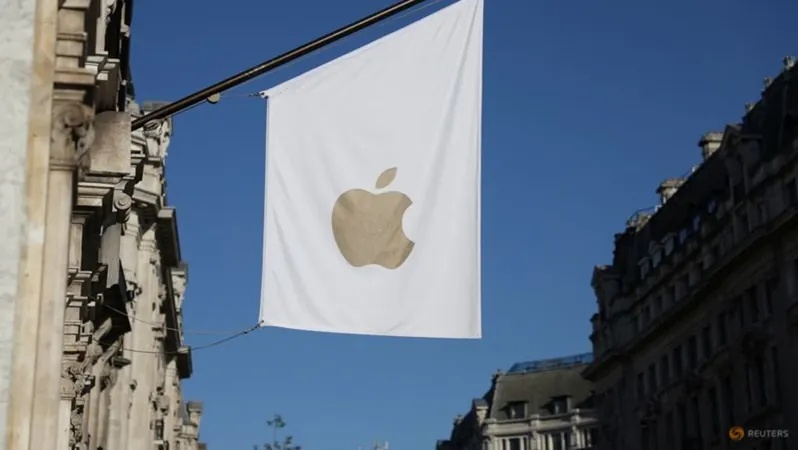
Breakthrough: Bitdefender Unveils Free Decryptor for ShrinkLocker Ransomware Victims!
2024-11-13
Author: Wei
Introduction
In a significant development for cybersecurity, Bitdefender has announced the release of a free decryptor specifically designed for the notorious ShrinkLocker ransomware. This malicious software exploits Windows' built-in BitLocker drive encryption tool, locking victims out of their files, an act that has raised alarm bells in both individual and corporate sectors.
Overview of ShrinkLocker Ransomware
ShrinkLocker first emerged in May 2024, identified by researchers at Kaspersky. Unlike more advanced ransomware strains, it exhibits a lack of sophistication but implements damaging features that amplify its impact. Bitdefender's findings reveal that ShrinkLocker is built upon a decade-old code repurposed from benign software, using the antiquated VBScript language. Interestingly, the operators behind this malware have been noted for their low skill level, often including redundant coding and typographical errors that indicate a haphazard approach.
Impact of ShrinkLocker
Despite the amateurish coding practices, ShrinkLocker has successfully infiltrated various corporate networks. One notable case involved a healthcare organization, where the ransomware encrypted entire networks of Windows 10, Windows 11, and Windows Server devices, including crucial backups. The attack unfolded rapidly, with the encryption process complete in just 2.5 hours, leaving the organization struggling to provide adequate patient care due to inaccessible essential systems.
How ShrinkLocker Operates
The ransomware operates in a distinctive manner. Rather than using its own encryption algorithms, it employs BitLocker, generating a random password that is then sent to the attacker. Initially, ShrinkLocker checks for BitLocker's presence through a Windows Management Instrumentation (WMI) query and installs the tool if it's absent. Once installation is complete, the script disables default protections against accidental encryption and uses the '-UsedSpaceOnly' flag to quickly encrypt only the utilized disk space.
Consequences of the Attack
Moreover, to fortify its encryption and ensure a chaotic aftermath, ShrinkLocker deletes all BitLocker protectors—tools that secure the encryption key—making it nearly impossible for victims to access their data. This malicious act is followed by a BitLocker password screen upon the system's reboot, which contains the attackers' contact details, hinting at a paradoxical offer of 'help' for ransom.
The Role of Bitdefender's Decryptor
Bitdefender's newly released decryptor tackles this crisis head-on. The decryption tool operates by reversing the sequence in which ShrinkLocker removes and reconfigures BitLocker's protectors. The researchers stumbled upon a crucial recovery window immediately after the protectors are deleted, allowing them to decrypt and restore the password created by the attackers and, ultimately, recover the affected data.
How to Use the Decryptor
Victims can access this valuable tool by downloading it onto a USB drive, connecting it to the affected systems, and following specific steps highlighted by Bitdefender to enter Recovery Mode. The decryptor is particularly effective soon after an attack, providing the best chance to restore access before the ransomware fully overrides BitLocker's settings.
Compatibility and Considerations
It's important to note, however, that this decryptor is compatible only with Windows 10, Windows 11, and recent versions of Windows Server. Conditions for successful decryption hinge on the sheer timing of response post-attack, plus the complexities surrounding the original encryption setup.
Cybersecurity Recommendations
Moreover, as awareness of ShrinkLocker and similar ransomware strains increases, cybersecurity experts urge organizations to bolster their defensive strategies against such threats. Regular backups, improved employee training on recognizing potential phishing attempts, and robust security policies can all contribute to minimizing risks.
Conclusion
The emergence of this decryptor exemplifies the constant battle between malicious actors and cybersecurity defenders, sparking a glimmer of hope for victims of this cyber menace while underscoring the importance of proactive measures in data protection. Stay vigilant, and remember: not all hope is lost when it comes to cybersecurity!

 Brasil (PT)
Brasil (PT)
 Canada (EN)
Canada (EN)
 Chile (ES)
Chile (ES)
 España (ES)
España (ES)
 France (FR)
France (FR)
 Hong Kong (EN)
Hong Kong (EN)
 Italia (IT)
Italia (IT)
 日本 (JA)
日本 (JA)
 Magyarország (HU)
Magyarország (HU)
 Norge (NO)
Norge (NO)
 Polska (PL)
Polska (PL)
 Schweiz (DE)
Schweiz (DE)
 Singapore (EN)
Singapore (EN)
 Sverige (SV)
Sverige (SV)
 Suomi (FI)
Suomi (FI)
 Türkiye (TR)
Türkiye (TR)